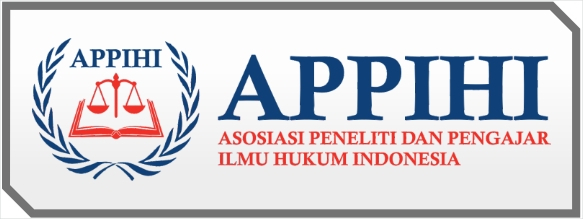Balancing Sanctions and Civilian Protection: Evaluating Humanitarian Carve-Outs under International Humanitarian Law
DOI:
https://doi.org/10.61978/legalis.v3i1.1129Keywords:
Sanctions, Humanitarian Law, Carve-Outs, Child Mortality, Humanitarian Access, Over-Compliance, International LawAbstract
Sanctions are widely used to enforce international norms, including International Humanitarian Law (IHL), but their unintended humanitarian consequences—especially for health systems and aid access—are increasingly evident. This study evaluates whether humanitarian carve-outs introduced under UN Security Council Resolution 2664 have mitigated these impacts. Using a Difference-in-Differences (DiD) framework, it analyzes data from 120 sanctioned countries (2000–2023), drawing from the Global Sanctions Database (GSDB-R4), WHO, UN IGME, and UNSC Panel of Experts reports. The treatment variable is the presence of humanitarian carve-outs, while outcome measures include under-five mortality rate (U5MR), maternal mortality, and aid delivery delays. Results show that carve-outs significantly reduced average aid delivery delays—from 22 to 13 days—and improved U5MR by approximately 8–10% in post-carve-out periods. No significant effect was observed on maternal mortality. Multilateral sanctions regimes implemented carve-outs more effectively than unilateral ones. Case studies from Yemen and Sudan confirmed operational improvements, whereas the Democratic Republic of the Congo (DRC) revealed persistent compliance and enforcement challenges. Over-compliance by banks and inconsistent national regulations continue to hinder humanitarian operations. The study concludes that humanitarian carve-outs represent a meaningful advance in aligning sanctions policy with civilian protection. However, their long-term effectiveness depends on legal clarity, multilateral coordination, and real-time monitoring. Policy recommendations include standardized implementation guidelines, safe harbor provisions for financial institutions, and greater inclusion of local actors to ensure sanctions enforcement does not exacerbate human suffering.
References
Burke, T. F., Shivkumar, P., Priyadarshani, P., Garg, L. F., Conde‐Agudelo, A., & Guha, M. (2022). Impact of the Introduction of a Low‐cost Uterine Balloon Tamponade (ESM‐UBT) Device for Managing Severe Postpartum Hemorrhage in India: A Comparative Before‐and‐after Study. International Journal of Gynecology & Obstetrics, 159(2), 466–473. https://doi.org/10.1002/ijgo.14156 DOI: https://doi.org/10.1002/ijgo.14156
Donia, A., & Elhaw, E. (2020). The Development of International Sanctions Policy and the International Humanitarian Law (From Economic Sanctions to Smart Sanctions). https://doi.org/10.52783/rlj.v8i4.3289 DOI: https://doi.org/10.52783/rlj.v8i4.3289
Eckert, S. E. (2021). Counterterrorism, Sanctions and Financial Access Challenges: Course Corrections to Safeguard Humanitarian Action. International Review of the Red Cross, 103(916–917), 415–458. https://doi.org/10.1017/s1816383121000953 DOI: https://doi.org/10.1017/S1816383121000953
Egger, C. (2023). The Politics and Spaces of Public-Private Partnerships in Humanitarian Tech Innovations. Environment and Planning C Politics and Space, 42(5), 708–724. https://doi.org/10.1177/23996544231206822 DOI: https://doi.org/10.1177/23996544231206822
Faulk, G. T. (2024). Strengthen US Sanctions by Enabling Regularized Use of Humanitarian Exemptions. Journal of World Trade, 58(Issue 4), 655–680. https://doi.org/10.54648/trad2024034 DOI: https://doi.org/10.54648/TRAD2024034
Gutmann, J., Neuenkirch, M., & Neumeier, F. (2021). The Economic Effects of International Sanctions: An Event Study. SSRN Electronic Journal. https://doi.org/10.2139/ssrn.3821520 DOI: https://doi.org/10.2139/ssrn.3821520
Khalaileh, Y. (2019). The Blockade of Qatar: Where Coercive Diplomacy Fails, Principles of Law Should Prevail. International Review of Law, 2018(4). https://doi.org/10.29117/irl.2018.0037 DOI: https://doi.org/10.29117/irl.2018.0037
Koehler, A. F. (2024). Inhumane Diplomacy: A Systematic Review on the Effects of International Sanctions on Poverty. International Trade Politics and Development, 8(3), 118–143. https://doi.org/10.1108/itpd-02-2024-0008 DOI: https://doi.org/10.1108/ITPD-02-2024-0008
Kokabisaghi, F. (2018). Assessment of the Effects of Economic Sanctions on Iranians’ Right to Health by Using Human Rights Impact Assessment Tool: A Systematic Review. International Journal of Health Policy and Management, 7(5), 374–393. https://doi.org/10.15171/ijhpm.2017.147 DOI: https://doi.org/10.15171/ijhpm.2017.147
Larch, M., Luckstead, J., & Yotov, Y. V. (2024). Economic Sanctions and Agricultural Trade. American Journal of Agricultural Economics, 106(4), 1477–1517. https://doi.org/10.1111/ajae.12473 DOI: https://doi.org/10.1111/ajae.12473
Musmeci, D. (2024). UN Targeted Sanctions, Counter-Terrorism Measures and Standing Humanitarian Carve-Out: A Lesson Learned? International Organizations Law Review, 21(3), 527–561. https://doi.org/10.1163/15723747-21030014 DOI: https://doi.org/10.1163/15723747-21030014
Seatzu, F., & Vargiu, P. (2023). Is the UNSC Resolution No. 2664 (2022) on Humanitarian Exemption a Paradigm Shift for Sanction Regimes? Paix Et Securite Internationales, 11. https://doi.org/10.25267/paix_secur_int.2023.i11.1205 DOI: https://doi.org/10.25267/Paix_secur_int.2023.i11.1205
Tan, D. (2024). The Causal Effect of Economic Sanctions on Political Stability: A Two‐stage Difference‐in‐differences Analysis. International Journal of Social Welfare, 34(1). https://doi.org/10.1111/ijsw.12707 DOI: https://doi.org/10.1111/ijsw.12707
Tarazona, J., Court-Marques, D., Tiramani, M., Reich, H., Pfeil, R., Istace, F., & Crivellente, F. (2017). Glyphosate Toxicity and Carcinogenicity: A Review of the Scientific Basis of the European Union Assessment and Its Differences With IARC. Archives of Toxicology, 91(8), 2723–2743. https://doi.org/10.1007/s00204-017-1962-5 DOI: https://doi.org/10.1007/s00204-017-1962-5
Walker, S. G. (2021). A New Measure of Overlap: An Alternative to the P--Value. https://doi.org/10.48550/arxiv.2106.01821
Wang, G., Hamad, R., & White, J. S. (2024). Advances in Difference-in-Differences Methods for Policy Evaluation Research. Epidemiology, 35(5), 628–637. https://doi.org/10.1097/ede.0000000000001755 DOI: https://doi.org/10.1097/EDE.0000000000001755
Pavillon, C. (2019). Private Enforcement as a Deterrence Tool: A Blind Spot in the Omnibus-Directive. European Review of Private Law, 27(6), 1297–1328. https://doi.org/10.54648/erpl2019072 DOI: https://doi.org/10.54648/ERPL2019072
Rasouli Ghahroudi, M., Balakrishnan, P. V, & Hoshino, Y. (2025). Strategic Adaptations of MNCs in Sanctioned Markets: The Impact of Investment Motives and Expatriate Presence. Journal of Global Marketing, 38(4), 320–347. https://doi.org/10.1080/08911762.2024.2447732 DOI: https://doi.org/10.1080/08911762.2024.2447732
Thürer, D. (2011). International Humanitarian Law: Theory, Practice, Context. https://doi.org/10.1163/9789047441458 DOI: https://doi.org/10.1163/9789047441458
Zhukovskiy, V. I., & Zhukovskaya, L. V. (2023). On the Concept of Equilibrium in Sanctions and Countersanctions in a Differential Game. Mathematics, 11(20). https://doi.org/10.3390/math11204402 DOI: https://doi.org/10.3390/math11204402







